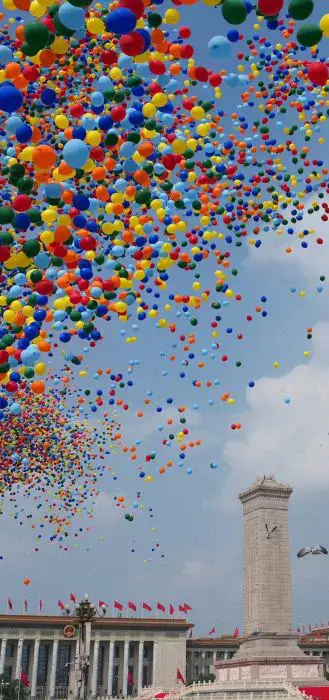On October 2, 2025, at Guangzhou Baiyun International Airport, an immigration officer from the Baiyun Border Inspection Station helped a Malaysian traveller with exit procedures. The traveller sighed with emotion: “Chinese people are really so happy now!”
This remark quickly became a trending topic on Weibo. One netizen observed that In Malaysia, Chinese make up 23% of the population, carrying on traditions like lion dance and Cantonese, and seeing China as their “cultural homeland”. But attitudes differ across generations:
The elderly (70+) feel the strongest emotional bond. They see China as their ancestral home, holding deep affection and pride.
The middle-aged (40–60) are pragmatic. They identify themselves as Malaysian and judge China based on what they personally saw years ago, the good and the bad, making their views mixed and nuanced.
The young generation grows up on overseas social media, where much of the Chinese content they see is biased. So when China is mentioned, many instinctively say things like, “Aren’t Chinese people very tough? Aren’t there lots of nationalists?”, not realizing they’ve been influenced by the media.
So, while the elderly speak from emotion, the middle-aged from lived experience, and the young from online impressions, it’s impossible to generalize. Any conclusion should start by asking: Which generation are you talking about?

Another netizen who has travelled to Malaysia compared the two countries and concluded:
Gasoline is very cheap. A liter of RON95 fuel costs about 3.5 RMB. Gas stations don’t sell RON92, only RON95 and RON98.
Because fuel is cheap, most cars on the road are gasoline cars. Electric cars are rare. There are very few traffic cameras, no driving restrictions, and public transport (like metro) isn’t very developed. People mainly drive or ride motorcycles.
Housing in Kuala Lumpur is quite affordable. About 10 km from the Twin Towers, a 120 m² apartment costs around 1.5–2 million RMB. Each unit usually comes with at least two parking spaces, and the community has facilities like swimming pools and gyms.
In terms of education, there’s almost no “school district housing” concept. Locals can choose Malay schools or Chinese schools. Malay schools are free from primary to high school. Chinese schools charge about 2,000 RMB per year starting from junior high.
Living costs are not high, about the same as many mid-sized Chinese cities. But labor costs are higher. For example, food delivery for about 5 km costs around 30 RMB.
Local people generally have a relaxed lifestyle. They are laid-back, not in a hurry, don’t push their kids too hard in education, and don’t overwork themselves.
Some online comments from Chinese netizens are as followed:
“Malaysian Chinese are still quite patriotic.”
“He also said something very important: only if China stays strong can the world be peaceful.”
“All of this stands on the hard work and sacrifices of generations who paved the way.”
“Took a taxi last night. The driver was a Chinese Malaysian. He said seeing China’s strength makes him proud, even though he isn’t a Chinese citizen.”
“So moving.”
“This sense of happiness is essentially the result of accessible infrastructure, digital innovation, social security, and cultural inclusiveness. It also echoes the emotional bond overseas Chinese feel with their cultural roots.”
“When the nation is strong, the people prosper. So don’t say ‘forget history’, only by remembering it do we know how hard today’s life was earned!”








